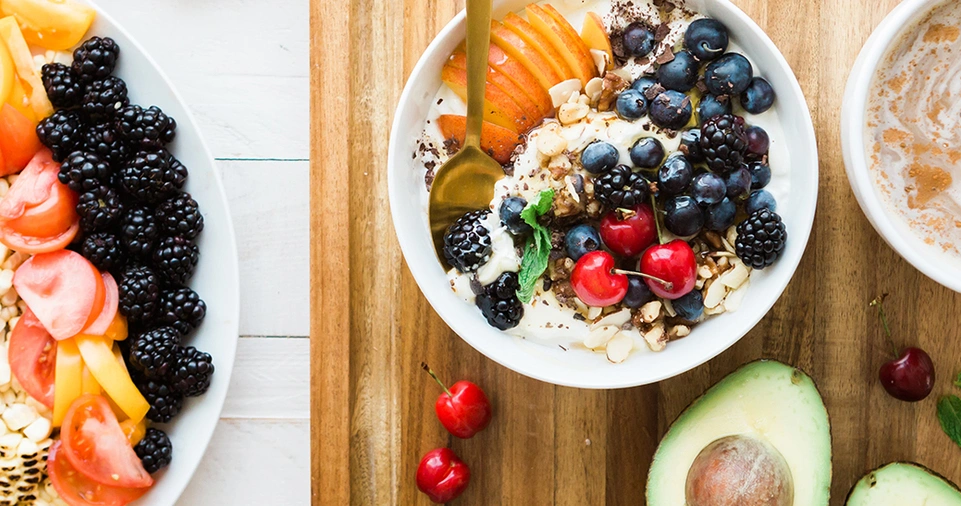Eating healthy is often perceived as expensive, but in reality, it is possible to maintain a nutritious diet without overspending.
Many people believe that fresh fruits, organic vegetables, and high-quality protein sources are out of reach for those on a tight budget.
However, with proper planning, smart shopping, and a few lifestyle changes, you can eat wholesome and balanced meals without straining your wallet.
Healthy eating doesn’t have to mean splurging on overpriced superfoods or gourmet organic products.
Instead, it involves making informed choices, reducing food waste, and being mindful of where and how you shop.
Whether you’re a student, a family on a budget, or someone simply looking to save money while eating well, this guide will provide you with practical, cost-effective strategies.
By following these tips, you’ll be able to improve your nutrition, reduce expenses, and enjoy delicious, home-cooked meals without sacrificing your health.
Step By Step Guide to Eat Healthy Without Breaking the Bank

Plan Your Meals for Cost-Effective Nutrition
The Importance of Meal Planning
One of the most effective ways to eat healthy on a budget is by planning your meals in advance.
Meal planning helps you save money by reducing food waste, preventing unnecessary purchases, and ensuring you buy only what you need.
It also saves time and ensures that you always have healthy meals ready to go, preventing you from opting for expensive takeout or processed foods.
How to Plan Meals Effectively
Start by creating a weekly meal plan based on your budget and dietary preferences.
Look at the ingredients you already have at home and plan meals that incorporate them.
This prevents food from going to waste and ensures that everything you purchase gets used.
When planning your meals, prioritize simple, nutritious recipes that use affordable ingredients.
Meals based on whole grains, legumes, seasonal vegetables, and inexpensive protein sources are cost-effective and nutrient-dense.
Additionally, planning for leftovers can help stretch your budget further.
Preparing larger portions allows you to use leftovers for lunch the next day, reducing the need for additional meals.
Buy in Bulk for Long-Term Savings
Why Bulk Buying is Cost-Effective
Buying in bulk is a smart way to cut costs while maintaining a healthy diet.
Many staple items, such as rice, beans, lentils, pasta, oats, and frozen vegetables, are significantly cheaper when purchased in larger quantities.
These foods have long shelf lives, making them excellent choices for stocking your pantry on a budget.
Smart Bulk Shopping Strategies
To get the best value when buying in bulk, consider shopping at warehouse stores or wholesale markets.
Many grocery stores also have bulk bins where you can buy the exact quantity you need.
Look for deals, discounts, and store-brand items, which are often more affordable than name-brand products.
Avoid purchasing perishable items in bulk unless you can store them properly. If you buy large quantities of fresh produce, consider freezing them for later use.
For example, berries, bananas, and spinach can be frozen and used in smoothies, while chopped vegetables can be stored for soups and stews.
Shop Seasonal and Local for Fresh and Affordable Produce
The Benefits of Seasonal Shopping
Seasonal produce is often cheaper, fresher, and more nutritious than out-of-season options.
When fruits and vegetables are in season, they are abundant, which drives down their price.
Additionally, they require fewer resources to grow and transport, making them a sustainable and cost-effective choice.
How to Find Affordable Local Produce
Farmers’ markets are excellent places to find fresh, locally grown produce at reasonable prices.
Many farmers sell fruits and vegetables at lower prices than grocery stores because they eliminate the middleman.
Additionally, some markets offer discounts at the end of the day to clear out remaining stock.
Another way to save money is by joining a local community-supported agriculture (CSA) program.
CSAs allow you to buy a share of a farm’s produce at a discounted price.
This option provides fresh, seasonal fruits and vegetables directly from farmers while supporting local agriculture.
Choose Affordable and Nutritious Protein Sources
Why Protein is Essential
Protein is an essential macronutrient that supports muscle growth, repairs body tissues, and keeps you feeling full.
While many people associate protein with expensive meats, there are plenty of budget-friendly options available.
Budget-Friendly Protein Sources
Eggs, beans, lentils, chickpeas, canned tuna, and tofu are excellent protein sources that are significantly cheaper than fresh meat.
Chicken thighs and drumsticks are more affordable than chicken breasts, and they can be just as nutritious when prepared properly.
Plant-based proteins like lentils and beans are not only inexpensive but also rich in fiber, vitamins, and minerals.
They are versatile ingredients that can be used in soups, salads, stews, and stir-fries.
Buying dry beans and cooking them at home is even cheaper than purchasing canned beans.
Cook at Home to Save Money and Eat Healthier
The Advantages of Home Cooking
Cooking at home is one of the most effective ways to eat healthy without overspending.
Restaurant meals and processed foods are often high in unhealthy fats, sodium, and additives, making home-cooked meals the better option for both your health and budget.
Tips for Cooking on a Budget
- Prepare meals in batches to save time and money.
- Use a slow cooker or pressure cooker to make affordable, hearty meals.
- Experiment with simple recipes that require minimal ingredients.
- Repurpose leftovers to create new meals, reducing food waste.
Cooking from scratch allows you to control the ingredients in your meals, ensuring you consume fresh and nutritious foods without unnecessary preservatives.
Reduce Food Waste to Maximize Savings
The Cost of Food Waste
Wasting food is like throwing away money.
Many households discard edible food simply because they do not store it properly or forget to use it before it spoils.
Reducing food waste can significantly lower your grocery expenses while helping the environment.
How to Minimize Waste
- Store perishable foods correctly to extend their shelf life.
- Keep an inventory of your fridge and pantry to use ingredients before they expire.
- Plan meals around ingredients that need to be used up.
- Freeze leftovers and extra produce for future meals.
By being mindful of how you use your groceries, you can maximize your food budget and ensure that nothing goes to waste.
Limit Processed Foods and Unnecessary Expenses
Why Processed Foods Are Costly
Packaged and processed foods may seem convenient, but they are often more expensive and less nutritious than whole foods.
Many pre-packaged meals contain preservatives, artificial flavors, and unhealthy fats, making them a poor choice for a healthy diet.
Healthier and Cheaper Alternatives
Instead of buying processed snacks, opt for whole foods like nuts, fresh fruits, yogurt, and homemade granola bars.
Preparing meals from scratch not only saves money but also ensures that you are consuming fresh, unprocessed ingredients.
Take Advantage of Discounts, Coupons, and Store Deals
How to Save More on Groceries
Many grocery stores offer weekly discounts, loyalty programs, and digital coupons that can help you save money on essential items.
Look for store-brand products, which are often cheaper than name brands but just as good in quality.
Smart Shopping Strategies
- Compare prices at different stores to find the best deals.
- Buy discounted items in bulk if they are non-perishable.
- Use cash-back apps and reward programs to earn savings on grocery purchases.
ALSO READ:
Conclusion
Eating healthy on a budget is achievable with the right strategies.
By planning meals, shopping smartly, cooking at home, and reducing food waste, you can maintain a nutritious diet without overspending.
With a little effort and creativity, you can enjoy delicious, wholesome meals that support your health and financial well-being.

